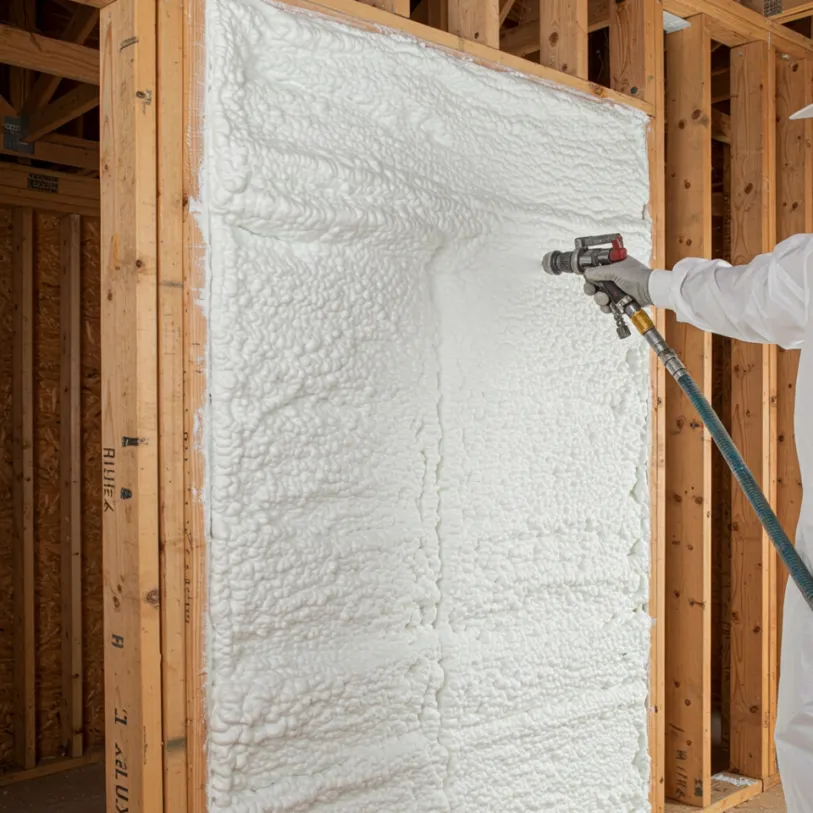

Proper insulation directly reduces the strain on your furnace by minimizing heat loss from your home. When a house is well-insulated, it holds onto conditioned air for much longer, creating a stable indoor temperature. This means the furnace doesn’t need to cycle on and off as frequently to combat escaping heat. Fewer cycles and shorter runtimes mean less work for every component, from the blower motor to the heat exchanger. This reduction in operational demand is what leads to a longer lifespan and fewer mechanical failures for the heating system.
This article explains the mechanical relationship between insulation and furnace health, detailing how a properly insulated home environment protects your HVAC investment. The information here is based on years of field experience observing how building envelopes perform.
A furnace’s primary job is to replace heat that escapes from your home. In a poorly insulated structure, this heat loss is constant and rapid. Heat naturally moves from warmer to cooler areas, so on a cold day, it will escape through the attic, walls, floors, and windows. This process is called thermal bridging. Your furnace is then forced to run almost continuously just to keep up and maintain the temperature you’ve set on the thermostat.
This constant operation puts significant stress on the furnace. The U.S. Department of Energy explains that this heat flow can be slowed by adding thermal barriers, which is precisely what insulation does. Materials with a higher R-value are more effective at resisting heat transfer, keeping the warm air inside where it belongs. When the rate of heat loss slows down, the furnace can run for a shorter period, satisfy the thermostat, and then rest for longer intervals.
Reducing the furnace’s runtime has a direct, positive effect on its most important parts. Each component has a finite operational lifespan, and minimizing use extends that life.
Bonus Tip: Air sealing is just as important as insulation. Sealing gaps and cracks around windows, doors, and plumbing penetrations stops drafts, which further reduces the burden on your furnace.
The difference in workload is not minor. The table below illustrates how a furnace might operate in two different environments.
| Performance Metric | Poorly Insulated Home | Well-Insulated Home |
|---|---|---|
| Furnace Cycles per Hour | 5 to 8 short cycles | 2 to 3 long cycles |
| Total Daily Runtime | 8 to 12 hours | 3 to 5 hours |
| Component Stress Level | High | Low |
| Energy Consumption | High | Significantly Lower |
This data shows a clear correlation: as insulation improves, furnace workload drops dramatically across every metric.
Before investing in an insulation upgrade, it’s helpful to think through a few factors to ensure you get the best results.
First, identify where your home is losing the most heat. A professional energy audit can use tools like infrared cameras to pinpoint the biggest problem areas. For many homes, the attic is the single largest source of heat loss.
Next, consider the type of insulation that best suits your home’s needs. Spray foam, fiberglass batts, and blown-in cellulose each have different properties and are suited for different applications like walls, attics, or crawl spaces. Your home’s construction and your budget will influence the right choice.
Finally, think about your local climate. The International Energy Conservation Code (IECC) provides recommended insulation R-values based on climate zones. Homes in colder regions like the Pacific Northwest require higher R-values to effectively combat heat loss. Making sure your insulation levels meet or exceed these recommendations is key to protecting your furnace.

Ultimately, viewing insulation as a maintenance tool for your furnace is the right approach. It’s a one-time upgrade that works continuously to reduce the operational demand on your entire HVAC system. By creating a more stable indoor environment, you not only improve comfort but also prevent premature breakdowns, cut down on repair calls, and help your furnace reach its full expected service life. Before making any decisions, evaluate your home’s current state and identify where improvements could deliver the most benefit.
Understanding your home’s specific insulation needs is the first step toward protecting your furnace and lowering your energy bills. For a detailed evaluation or to discuss the best insulation options for your property, contact the team at Cascadia Spray Foam of Seattle. You can reach the office at (425) 386-3500 or send an email to [email protected] to schedule a consultation.
Common indicators include uneven temperatures between rooms, cold walls or floors, high energy bills, and a furnace that seems to run constantly. You might also notice ice dams forming on your roof in the winter, which happens when heat escaping through the attic melts snow on the roof.
For most homes, the attic is the most critical area to insulate. Since heat rises, a poorly insulated attic is a major escape route for warm air. According to ENERGY STAR, homeowners can save an average of 15% on heating and cooling costs by air sealing and insulating their attics and crawl spaces.
Absolutely. Insulation works by resisting heat transfer in both directions. In the summer, it helps keep the hot outdoor air from entering your home, which reduces the workload on your air conditioner just as it does for your furnace in the winter.
Spray foam insulation is highly effective because it acts as both an insulator and an air barrier. By expanding to fill gaps and cracks, it stops air leakage far more effectively than other insulation types. This superior air-sealing quality makes it an excellent choice for minimizing the workload on both heating and cooling systems.


